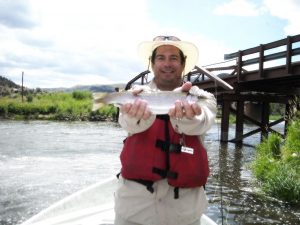Casting Widespread Appeal: Unveiling the Most Popular Type of Fishing Worldwide


Fishing, a universal pastime that spans cultures and continents, offers a variety of methods catering to different environments and species. Among these, one method stands out due to its accessibility, simplicity, and the sheer enjoyment it provides to people of all ages. Bait fishing, also known as angling, emerges as the most popular type of fishing globally, beloved for its versatility and the deep-rooted tradition it holds in numerous fishing communities.
The Universal Charm of Bait Fishing
Bait fishing involves using live bait such as worms, minnows, insects, or artificial bait like lures and plugs to entice fish. This technique is revered for its straightforwardness and effectiveness, making it a first choice for novice and seasoned anglers. Unlike more specialized methods like fly fishing or ice fishing, bait fishing can be enjoyed in various aquatic settings, from quiet freshwater lakes to the vast open seas.
Versatility Across Waters
What sets bait fishing apart is its adaptability. Whether by the edge of a serene lake, on a riverbank, or aboard a boat in the ocean, you can engage in bait fishing. This method works under almost any condition and is suitable for targeting a wide range of fish species. From panfish in small ponds to marlin in the deep blue, bait fishing covers it all, making it a universal method in the angler’s arsenal.
Ease and Accessibility
One of the key reasons for its popularity is the minimal skill required to start bait fishing. Anyone can attempt to catch fish with basic equipment such as a rod, reel, line, hooks, and bait. This accessibility makes it an ideal starting point for beginners. It’s a way to introduce children to the joys of fishing, often leading to lifelong passion. Furthermore, bait fishing does not demand the same level of physical activity as fly fishing or the intense gear and techniques required for deep-sea ventures, making it more inclusive for people of all ages and physical abilities.
Cultural Significance and Social Bonding
Fishing is more than just catching fish; it’s a cultural cornerstone in many communities. Bait fishing, in particular, plays a significant role in social bonding. It’s a communal activity that families and friends can share, creating memories along the banks of rivers, lakes, and seas. Many cultural traditions revolve around fishing, from the fish fries in the Southern United States to the festive fish markets in coastal Asian communities.
Economic Impact
Beyond recreation, bait fishing significantly contributes to local and global economies. It sustains commercial fishing industries and supports tourism in many parts of the world. Anglers travel far and wide to find the best spots, often bringing income to remote areas. The simplicity and effectiveness of bait fishing make it a staple for subsistence and sport fishing, underpinning its economic value.
Environmental Considerations and Conservation Efforts
With popularity comes responsibility. The widespread practice of bait fishing impacts aquatic ecosystems, necessitating sustainable practices and conservation efforts. Anglers are increasingly aware of the need to maintain fish populations and the health of water bodies. Practices such as catch and release, using environmentally friendly gear, and participating in habitat restoration projects are part of the responsible angler’s approach.
Technological Enhancements in Bait Fishing
Advancements in technology have also refined bait fishing techniques, making them more efficient and environmentally friendly. Innovations in biodegradable baits and non-toxic tackle reduce fishing’s environmental footprint. GPS and sonar technologies allow anglers to fish more strategically, increasing success rates and reducing unnecessary harm to fish populations.
The Future of Bait Fishing
Looking ahead, the future of bait fishing will likely see more technology integration and a stronger emphasis on sustainable practices. As the global population becomes more conscientious about environmental issues, the fishing community is adapting to ensure that this beloved pastime continues to thrive without compromising the health of aquatic ecosystems.
Educational Opportunities and Community Involvement
The popularity of bait fishing also opens avenues for education and community involvement. Programs that teach young anglers about fishing ethics, the science of aquatic ecosystems, and the skills needed to fish responsibly are becoming more common. These initiatives enrich the fishing community and ensure that future generations can enjoy and preserve this age-old tradition.
Bait fishing holds the title of the most popular type of fishing worldwide due to its accessibility, simplicity, and the profound connection it offers between humans and the aquatic world. It spans generations and geographies, drawing beginners and experts alike with its straightforward charm and effective results. As we move forward, the focus is on maintaining the sustainability of this practice so that it continues to unite anglers and nature in harmony. By embracing responsible fishing practices and fostering a community of informed, ethical anglers, bait fishing will continue to be a cherished activity for many generations.

